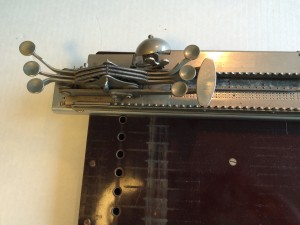All about Braille
MET 640 Video Documentary Project: All About Braille
By Lynn Seymour Lalonde
Introduction:
This project reviews the history of Braille, and the cultural context of blindness as Braille was being introduced. It progresses from “pre-braille” to the production of Braille, and ends with examples of current Braille technology.
Production Choice:
I had hoped to produce this video documentary on Camtasia, as I was just beginning to learn about its features. Unfortunately, one of my videos became damaged and would not work with Camtasia. In order to include the video, I switched to Windows Movie Maker, which worked with the corrupted video.
Style:
I had thought about interspersing the current Braille technology (videos) to change the pace of the historical timeline perspective. However, I realized that in a ten minute documentary with the amount of information that I wanted to present, it seemed easier for the viewer to follow through a timeline. The documentary is a bit heavy on the historical side, but this highlights the culture change that occurred around and for people who are blind over the past three centuries. It is interesting to note that until a access to literacy became available to the general population in the 1700`s, the perception of and way of life for blind individuals did not progress.
Challenges:
I learned many things in this project including the wonderful resources that are available at our educational centre in Halifax. Most of the photographs of Braille devices included in the video are from the Centre. I relied on some technical expertise and some steady hands as well as the knowledge of our Braille and Library staff to help me with some of the production issues.
There a number of excellent websites available for providing information on the history of Braille. I mention the American Foundation for the Blind Museum in my video, as it has more styles of Braille devices that I could possibly mention. It was also very interesting to discover that many of the companies that produce Braille Devices have historical sections on their websites.
Images: The “Fair Use” policy seems to be unclear on using photos from the Internet. Following the guidelines for citing images at http://www.landmark.edu/library/citation-guides/landmark-college-citation-guides/apa-citation-style-guide/ I included the website locations for the images that are used in the document.
Successes:
Finally, the momentum of change over the last century in the education of Braille, is comparable to that of educational reform and technological developments. It is impressive to see how many more opportunities are available for our visually impaired students today.
Script and Bibliography:
MET Script for Assigment FINAL DRAFT
Video Link:
https://www.youtube.com/watch?v=bE4Xk8rPySg&feature=youtu.be



Hi Lynn,
I have been interested in braille since reading the story of Helen Keller many years ago. The development of braille is very fascinating. It is interesting how closely education is linked to reading and writing, even in the very early days.
Catherine